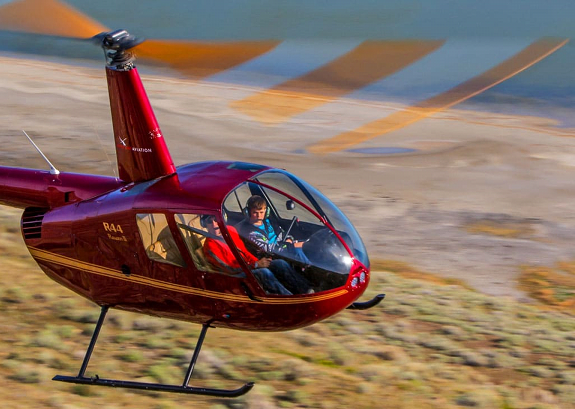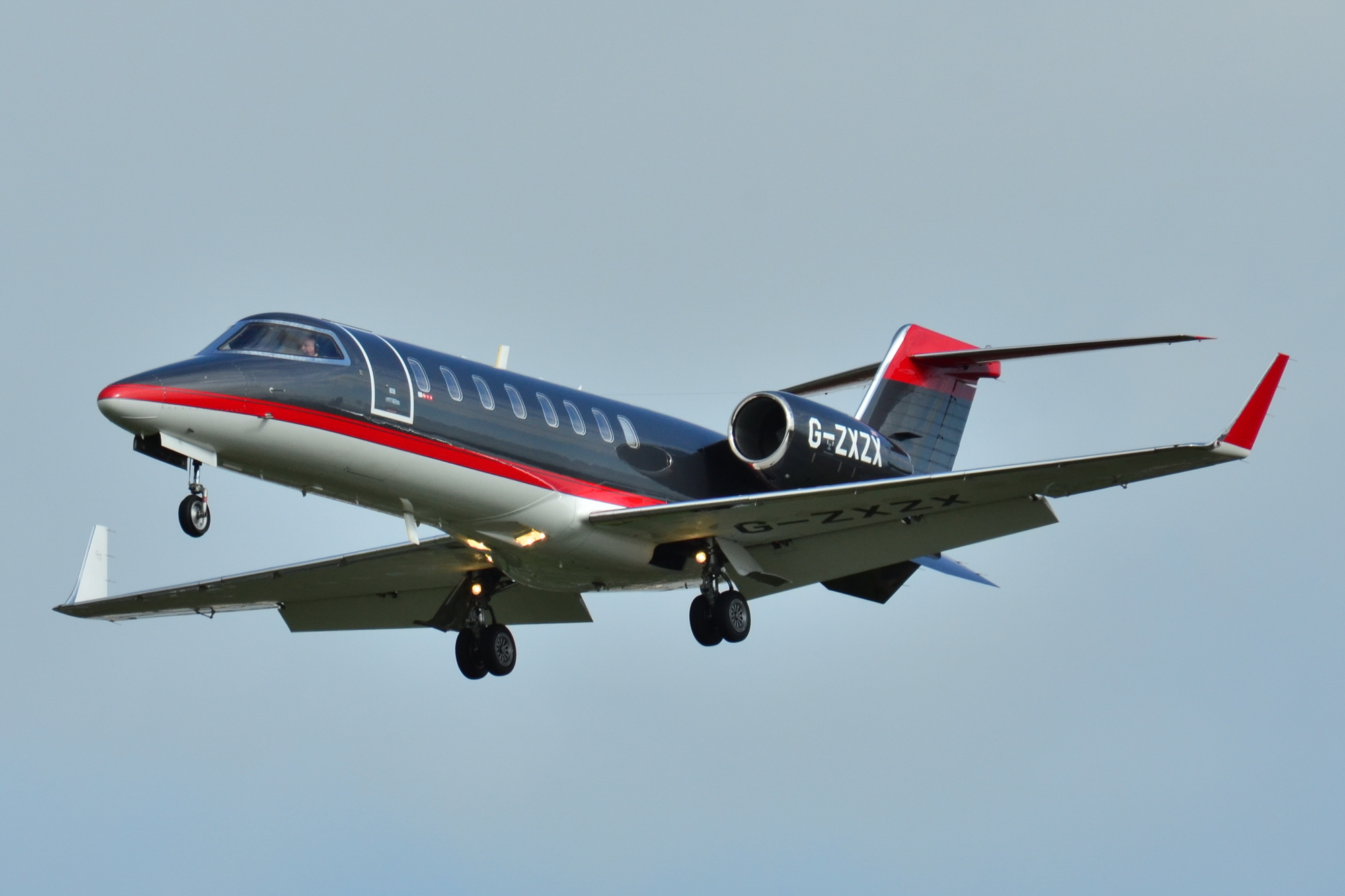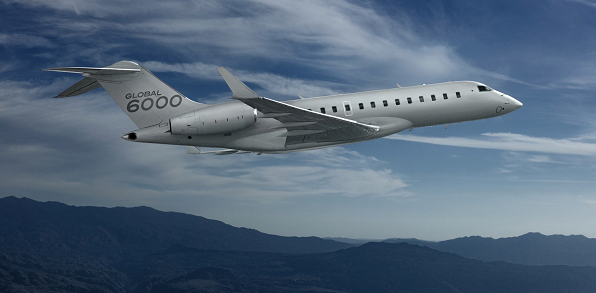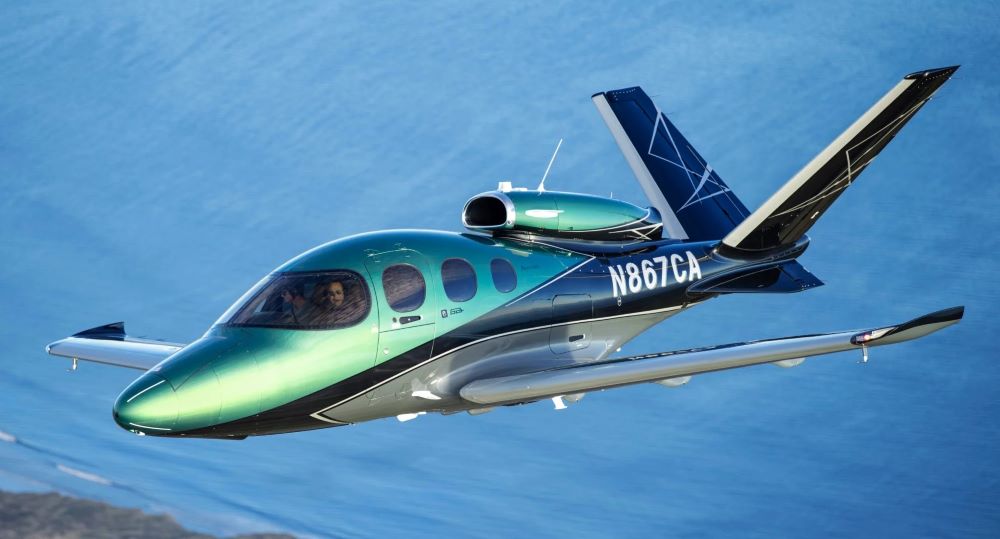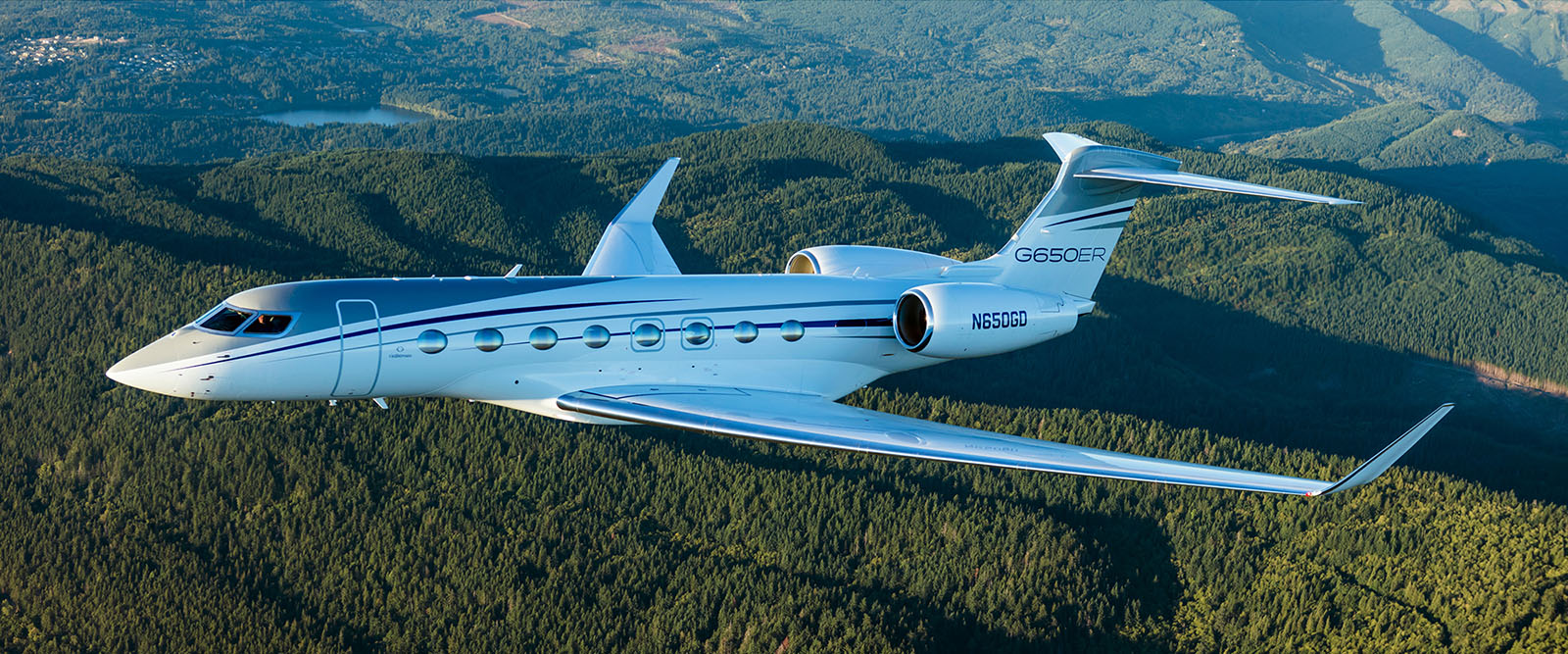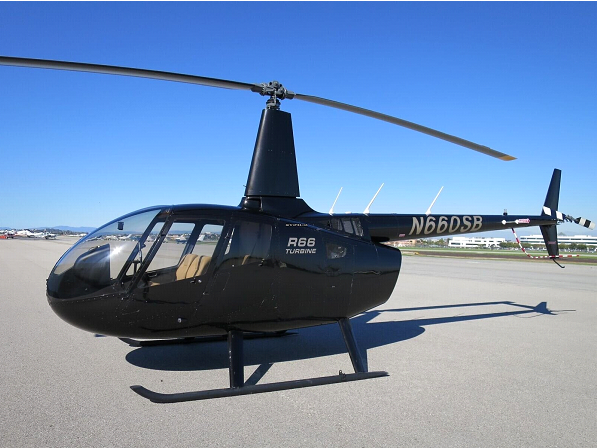Gulfstream III (1980) Review: Specs, Features, Costs & Why It Still Matters
8 min read

When it comes to private aviation, very few names carry as much weight as Gulfstream. Known for producing reliable, high-performing business jets, Gulfstream Aerospace's lineage stretches back decades. Now, one of the standout aircraft in that legacy is the Gulfstream III, introduced in 1980.
Positioned as a step-up from the earlier Gulfstream II, the GIII was aimed squarely at corporate executives, military branches, and VIPs looking for speed, comfort, and intercontinental range in one neatly wrapped package. Over the years, it’s become something of a quiet classic: not flashy, not revolutionary by today’s standards, but deeply respected.
Let’s dive into what made the Gulfstream III special when it launched, how it holds up today, and why, depending on your aviation needs, it could still be a viable option or a money pit waiting to happen.
History and Development

The Gulfstream III was not conceived in isolation; it was born from a lineage of increasingly sophisticated business jets. Gulfstream’s roots date back to Grumman Aerospace, which in the late 1950s developed the turboprop Gulfstream I, followed by the jet-powered Gulfstream II in the late 1960s. The GII became the first business jet to fly nonstop from the US to Europe on May 4, 1968.
In 1978, corporate serial entrepreneur Allen Paulson acquired the Gulfstream brand and Savannah production facilities. He rebranded them as Gulfstream American with a clear mission, which is to design a jet that offered greater speed, range, and sophistication compared to the GII. And the mission led to the production of the Gulfstream III.
The design work for the GIII began in the late 1970s. The prototype of the Model G-1159 Gulfstream III made its maiden flight on December 2, 1979. Gulfstream received FAA type certification on September 22, 1980, and customer deliveries began shortly after that in late 1980.
Performance Highlights
At the heart of the Gulfstream III are two Rolls-Royce Spey RB.163 Mk 511-8 turbofan engines. Each one produces about 11,400 pounds of thrust, and the same powerplant is used in the Gulfstream II. But the difference wasn’t the engine; it was what Gulfstream did around it.
Engineers redesigned the wing, added winglets (which were a rare feature at the time), stretched the fuselage by two feet, increased fuel capacity, and introduced subtle changes to the empennage and cockpit layout. Together, these upgrades significantly improved the aircraft’s aerodynamic performance, range, and weight distribution.
- Maximum Range: Approximately 3650 nautical miles, which translates to 6,759 kilometers at long-range cruise speed. This meant the aircraft could fly nonstop from New York to London or Los Angeles to Honolulu under optimal conditions. In 1980, that was world-class.
- Maximum Cruise Speed: Mach 0.84, which is around 561 mph or 903 km/h. While not supersonic, it was one of the fastest business jets of its day, and still faster than many mid-size jets today.
- Service Ceiling: 45,000 feet. The GIII could cruise well above most commercial traffic and weather systems, reducing turbulence and improving fuel efficiency.
- Fuel Burn Rate: Roughly 500 to 600 gallons per hour, depending on the cruise altitude, temperature, and load. Now, we should say this is on the high end for business aviation, even for its era, but it was justified by the aircraft's range and payload capacity.
- Takeoff Distance (MTOW): About 5000 feet of runway required at sea level under standard conditions. That's respectful; for a jet of its size, though not quite short-field capable. High-altitude or hot-weather airports could stretch this requirement significantly.
- Landing Distance: Around 3700 feet, though this varies depending on configuration, braking technique, and runway conditions.
Cabin and Interiors
Back in 1980, the GIII’s cabin was considered cutting-edge. It offered one of the most spacious interiors available in its category, with a length of over 41 feet and a stand-up height of just over six feet. Combined with the signature Gulfstream oval windows that bathed the cabin in natural light, passengers enjoyed an environment that felt more like a high-end office lounge than a traditional aircraft cabin.
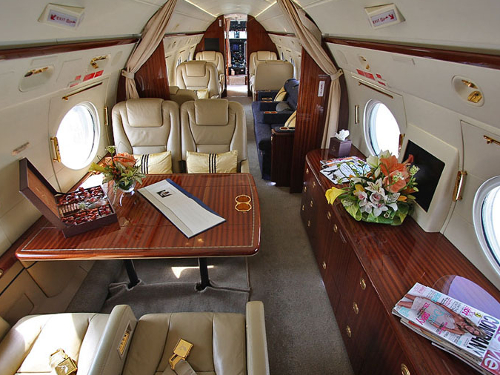
The typical layout seats between 12 to 14 passengers, though some versions were configured for up to 19. Seating was often arranged in a forward club configuration; four plush, swiveling leather chairs facing each other, followed by a conference group or divan setup in the rear.
Storage space is also a high point for the jet. With roughly 160 cubic feet of baggage space, all accessible in-flight, passengers could pack more than just weekend bags. Golf clubs, garment carriers, and business equipment could all be stowed with ease, making the aircraft particularly popular among sports teams and corporate delegations in its heyday.
Cabin pressurization in the Gulfstream III was one of its underrated features. With a max pressure differential of around 9.5 psi, it could maintain a sea-level cabin environment until roughly 22,000 feet and still keep things comfortable at its cruising altitude of 41,000 to 45,000 feet. This made longer flights less fatiguing, a real selling point in the early days of executive jet travel.
Noise, however, was always a bit of a sticking point. The Rolls-Royce Spey engines powering the GIII were never known for being quiet, and even with insulation, cabin noise levels remain noticeably higher than on modern Gulfstreams. To comply with modern airport noise regulations, especially in Europe and North America, most GIII units today are fitted with Stage 3 hush kits. These add some weight and marginally reduce range, but they allow the aircraft to continue operating in sensitive airspace.
Technology and Avionics
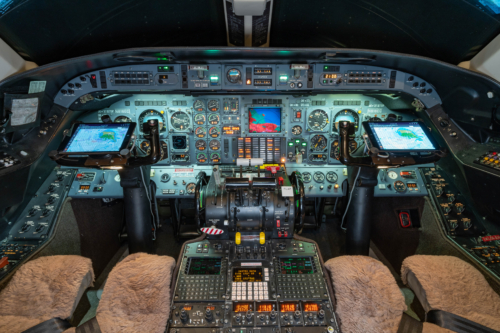
Here’s what the Gulfstream III starts to show its age. While the Gulfstream III was impressive when it first took to the skies in 1980, its original cockpit design now looks undeniably vintage. Initially equipped with the Sperry SPZ-800 flight director system and a Sperry Primus 800 EFIS, the flight deck combined analog instruments with early-generation autopilot and weather radar systems. Later builds incorporated Honeywell ring-laser gyros, which improved heading accuracy and reliability over traditional mechanical gyros.
Back then, this setup represented state-of-the-art technology: dual-channel autopilots, multi-function displays, and digital navigation aids. But in the context of today’s aviation environment, it falls well short of modern expectations, particularly regarding NextGen compliance elements like ADS-B Out, CPDLC, synthetic vision, and full glass cockpit integration.
That said, many operators have pursued comprehensive modernization. A popular retrofit is the Universal Avionics EFI-890R display with Vision-i synthetic vision, combined with dual UNS-1 FMS units and Terrain Awareness & Warning Systems (TAWS). This upgrade, granted FAA STC approval in 2007, transformed the GIII into a safer and more capable platform.
Operating Costs
While buying a used Gulfstream III today might seem like a steal (some models go for under $1 million), the real cost is in the operations. The operational costs for a GIII can easily be $4400 to $4500 per flight hour. That includes fuel burn at about 500-600 gallons per hour. With current Jet-A prices, this could mean $2000-$3500 per hour in fuel alone. On top of that, you have variable costs like maintenance labor, parts, inspections, and even engine reserves can add up to another $2,000 to $2,300 per hour, depending on utilization and engine condition.
Annual fixed costs are equally steep. For 200-400 hours of use in a year, you’re likely looking at crew salaries and training ($300,000+), hangar fees ($70,000+), insurance ($30,000-$50,000), management services, and miscellaneous overhead (fuel planning, regulatory compliance, catering, etc), bringing fixed expenses to roughly $530,000 per year.
When variable costs are added in, as with 200 hours of flight time, the annual cost for a Gulfstream III can reach $1.4 to $2.0 million, or approximately $9,500 per flight hour when all is tallied. Even operators who fly less still face these baseline costs, making the GIII expensive even when idle.
Even routine phase inspection, typically every 6-12 months, can run as high as $50,000 per event, regardless of flying hours. Combine that with legacy avionics and an airframe over 40 years old, and maintenance costs tend to accumulate even in periods of inactivity.
In a nutshell, yes, you might buy a Gulfstream III for under a million upfront. But every hour it flies, or even stands, costs money.
Why It Might Still Be a Good Buy
The Gulfstream III appeals to a specific kind of buyer; someone who
- Wants an affordable entry into large-cabin ownership
- Is willing to invest in avionics upgrades
- Will use it for shorter, regional flights where range isn’t maxed out
- Has access to a solid maintenance network
If you’re not flying it weekly and you don’t mind the older fuel-hungry engines, the GIII can still provide a high end cabin experience and long legs across continents. It’s a plane with a heritage, and that matters to some.
Why It Might Be a Bad Idea
On the flip side, buying a Gulfstream III is a little like buying a 1980s Rolls-Royce. The upfront cost might be manageable, but every service appointment is going to sting. Some key reasons it could be a bad idea:
- Maintenance and fuel costs will eat into your budget fast
- Parts for the Spey engines are increasingly hard to find
- Not ADS-B compliant without retrofits (mandatory in US airspace)
- Resale value is virtually nonexistent
Unless you have a very specific operational need or you’re an aircraft collector, a GIII probably isn’t your most cost-efficient option.
Final Verdict: Quietly Iconic, But a Tough Love Affair
The Gulfstream III is one of those aircraft that quietly carved out a chapter in business aviation history. It didn’t set records, but it offered reliability and style when it counted. For many, it was their first experience of flying private at long range. For others, it was a VIP transport for state leaders or top-level executives.
But in 2025, the GIII feels like a nostalgic echo of a past era. It demands more love, more cash, and more attention than its newer Gulfstream siblings. That said, it still commands respect on the tarmac; an old veteran with stories to tell. But maybe not the plane you want flying you into the next decade unless you're ready to commit.
